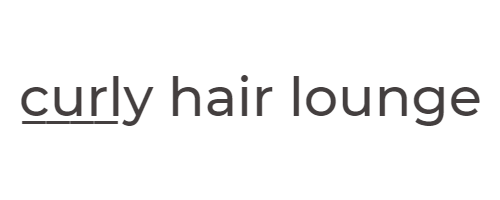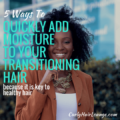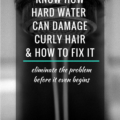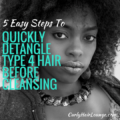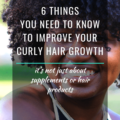If you’re like any other curly out there who has some sort curly hair damage or condition there is a high chance you already looked on YouTube or some blog for tips on how to recover from damaged hair to healthy curly hair. This is, of course, good because the first step to recovery is admitting you have a problem. However, though canned advice can definitely be helpful and produce positive results if you don’t identify and understand the problem you may end up in the same situation you were in before.
Now you may say, ‘But Mónica, I have done this and that and it worked out perfectly!’
Well, that’s great! For the most part, the general advice you find online won’t harm your hair, things like:
- Deep condition weekly
- Stop heat use
- Do protective styles
- Don’t use harsh sulphate shampoos
- Stop chemical treatments
- Trim your hair
This is all great! However, when you go online to look for solutions for hair loss (let’s assume this is your problem) and start massaging oils every day to increase growth and stop hair loss you can be doing more damage than good.
Why?
Well.. hair loss can have many causes like hair care practices, styling, poor diet, postpartum hair shedding, illness or medication. By massaging oils on your scalp every day you are clogging its pores. I’m sure you heard the expression that a ‘Clean scalp leads to healthy hair‘ (or something similar), after all, it is a living tissue!
Would you apply oils to your face every day without washing it first? You know… just pilling it up?… Can you imagine how your skin would look and feel after a week or two?
Your scalp already produces sebum to protect your hair and scalp. Fair enough, it’s unable to reach the entire length of your hair due to curl shape. However, your scalp will all ways have sebum it doesn’t need any more oil added to it.
Now, if you’re trying to stimulate hair growth a simple scalp massage whereby you’re massaging and evenly distributing sebum (like in the WOW method) will have the same effect without the daily oil that will clog the pores, attract more dust and pollution, create more build up and that can even bring about some fungus. Yuck!
Does this mean you can’t do a scalp massage with oil?! No. Why not do it before you wash your hair? Better yet, do an oil pre-poo, massage your scalp (use your fingers os something like this), leave it on for a while and then wash your hair with a sulphate shampoo (if you prefer, do your scalp massage when shampooing).
The point is, you need to address the condition and not just the symptoms. How can you do this? Let’s take it step by step.
#1| Identify The Possible Problem
You may not know what the real problem is but you’re able to identify the symptoms. If you’re reading this blog post you probably noticed your hair feel or looks different or has been behaving differently for a while. Take a moment and think what is the most evident thing your hair is lacking or suffering from?
- Dryness
- Hair loss
- Breakage
- Frizz
- Split ends
- Dry or itchy scalp
- …
#2| Eliminate/Identify External Causes
As I said before, sometimes the reason you may be experiencing something with your hair may not be directly related to your hair routine. So it’s important you also consider external causes as they can be the problem or it can be a combination of the two – hair routine and external causes.
So consider these questions
- Are you or have you been under stress? (hair loss including alopecia)
- Are you on medication which side effects affect your hair? Consider medication for cancer, blood pressure, birth control pill, weight loss, acne, antidepressants… (hair loss or thinning hair)
- Do you have a poor diet? (decreased hair growth, weak hair, hair loss)
- Do you swim frequently (chlorine in water)? (dryness, breakage)
- Could you be allergic to your laundry’s detergent? (itchy, irritated scalp)
- Have you given birth recently? (hair loss, thinning hair or hairline)
- Think of any other possible scenarios (…)
If you found yourself saying yes to one or more of these questions think about how you can tackle the issue. For some of these questions, you will need to talk to your doctor to start taking some medication or to change it.
#3| Eliminate/Identify Causes in Your Hair Routine
Okay, so now that you examined external causes let’s have a look at your hair routine and what could be going wrong. It’s possible that you already have an idea of what is happening, maybe you got a little careless or lazy in your routine or engaged in hair care practices that don’t do your hair any good. Either way, let’s jump right in.
- Do your hair products have harsh ingredients?
- Do you co-wash frequently?
- Do you clarify your hair?
- Do you use baking soda?
- Do deep condition frequently balancing moisture and protein?
- Do use heat frequently?
- Did you dye or bleach your hair?
- What is your water quality?
- Do you like tight hairstyles?
- Are you addressing your hair’s needs?
- (…)
These are just a few questions to get you started, many more could be made but I find that most ‘hair problems’ can be found when answering these questions. Follow the linked text to know more about each subject.
#4| Address The Problem
Now that you did all previous steps you must have identified your problem. Remember, your hair condition can be related to external causes, to your hair routine or be a combination of the two. Either way, you’ll always need to address your hair condition. Let’s consider the following scenario to give you an idea:
Quick Scenario
Let’s say you notice your hair is breaking more than usual and after going through each previous step you accept that your diet hasn’t been the best, your tap water is hard and you don’t clarify your hair regularly or ever. Your action plan should be to improve your diet and maybe add a food supplement to cover for any diet insufficiencies and a busy lifestyle.
Because minerals in hard water get deposited on your hair and prevent proper hair moisture you would need to use a water filtering system for your house or just your shower to prevent this from happening. Lastly, incorporate a clarifying session in your hair routine to remove build up from hair products and water minerals. You may need to do this once a month or every two or three weeks, it will depend on your water quality, the ingredients on your hair products and use of vegetable oils an butter (remember it’s not just unsoluble silicones that create build up).
If all else is good in the hair routine there won’t be the need to do much more to correct the hair breakage. However, things ain’t always cut and dry and there can be a number of wrong things happening or you may also need to add some protein to improve strength and elasticity. It may be hard to identify and correct all issues, for sure. Each case is unique. This is when you need to seek help from someone who is experienced with curly hair texture and can offer you guidance.
Whatever you do, take action! Don’t close your eyes to what is happening to your hair thinking it will correct itself or that it’s nothing much. If you need some extra guidance you can download this free worksheet guide from my Resource Library to help you with possible problems in your hair routine (click the image below). Alternatively, you can read this post, where I walk you through how I overcame hair breakage while transitioning to natural hair.
Do you have any more tips for dealing with hair damage?
